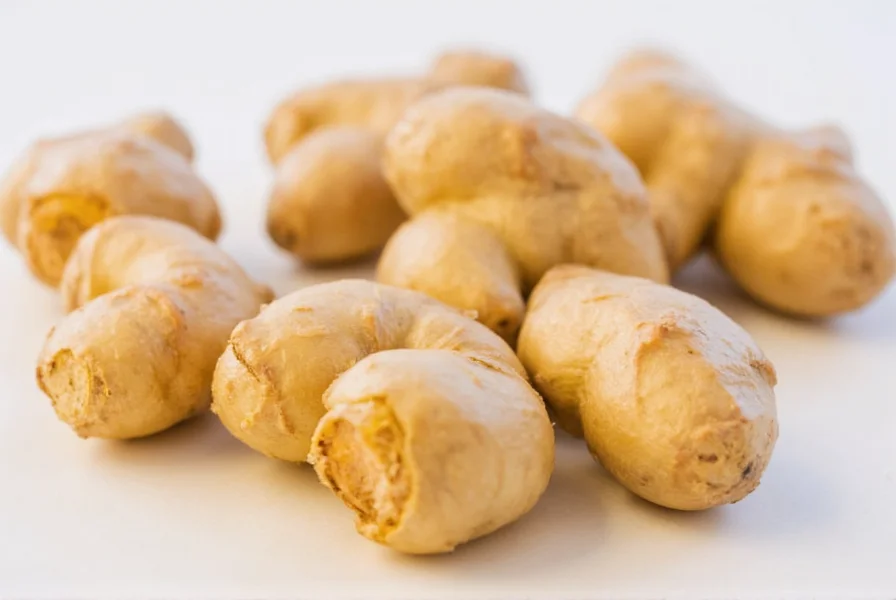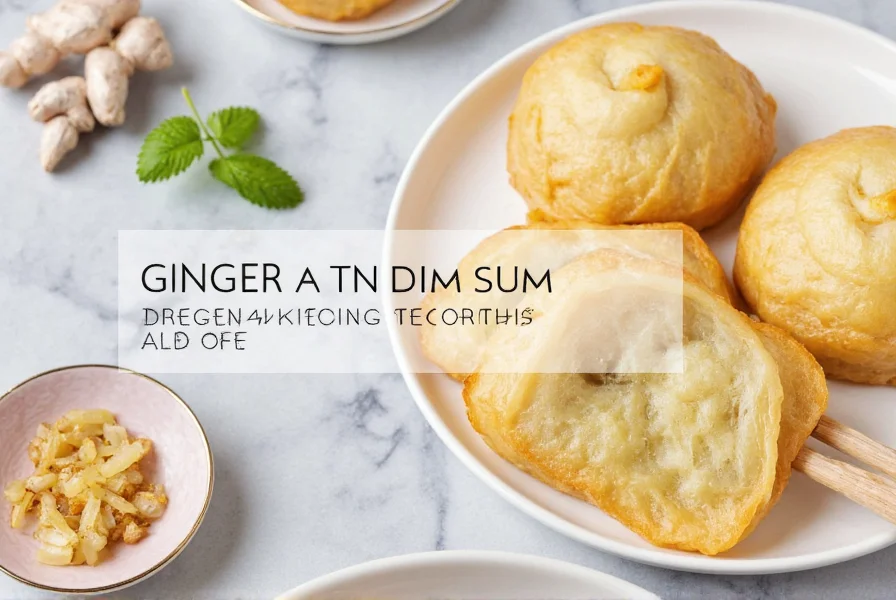Ginger dim sum refers to traditional Chinese dumplings and small bites that incorporate fresh ginger root as a key flavor component, either in the filling, wrapping, or dipping sauce. Authentic preparations use young ginger for its bright, citrusy notes that enhance seafood and poultry fillings without overpowering delicate textures.
When exploring ginger dim sum, you're engaging with a centuries-old culinary tradition where ginger serves both flavor and functional purposes. In Cantonese cuisine—the birthplace of modern dim sum—ginger's natural enzymes help tenderize proteins while its warming properties balance rich ingredients. The most celebrated ginger-infused varieties include har gow (shrimp dumplings) with minced ginger in the filling, char siu bao (barbecue pork buns) with ginger-scallion oil, and steamed fish dumplings where ginger slices rest atop the delicate parcels.
The Culinary Science of Ginger in Dim Sum
Understanding why ginger works so well in dim sum requires examining its chemical properties. Fresh ginger contains zingibain, a protease enzyme that gently breaks down proteins—making it ideal for seafood fillings that would otherwise become tough during steaming. Chefs typically use young ginger (with pale yellow skin and tender flesh) rather than mature ginger for dim sum because its milder heat and higher moisture content integrate seamlessly into delicate doughs.
| Ginger Type | Best For | Preparation Method |
|---|---|---|
| Young ginger | Shrimp/pork dumplings | Finely minced, added raw to fillings |
| Mature ginger | Broths and sauces | Simmered to extract flavor |
| Candied ginger | Dessert dim sum | Chopped for sweet fillings |
Signature Ginger Dim Sum Varieties
Three preparations showcase ginger's versatility in authentic dim sum service:
- Ginger-Infused Har Gow—The classic shrimp dumpling receives minced young ginger in the filling, which reacts with the shrimp's proteins to create an exceptionally tender texture. Traditionalists use a 3:100 ratio of ginger to shrimp by weight.
- Steamed Ginger Fish Dumplings—Whole ginger slices rest atop delicate fish paste parcels, releasing aromatic steam that infuses the filling during cooking. This technique prevents the ginger from becoming fibrous.
- Ginger-Scallion Siu Mai—The open-topped pork dumplings incorporate ginger juice rather than solid pieces, creating a subtle warmth that complements the savory filling without textural interference.
Perfecting Ginger Ratios in Home Preparation
Home cooks often make the mistake of overusing ginger in dim sum. The ideal balance follows these professional guidelines:
- For seafood fillings: 1 teaspoon finely minced ginger per 8 oz (225g) of protein
- For poultry fillings: 1.5 teaspoons per 8 oz (225g)
- In dough: Replace 10% of water with ginger-infused liquid
- In dipping sauces: 1 part ginger juice to 3 parts soy sauce
Always add ginger to fillings at the final mixing stage to prevent over-processing, which releases bitter compounds. For the cleanest flavor profile, grate ginger directly into fillings rather than using pre-minced versions.
Traditional Ginger Pairings in Dim Sum Service
In authentic tea houses, ginger dim sum appears early in the service sequence for specific physiological reasons. The warming properties of ginger stimulate digestion, preparing the palate for richer dishes to follow. Classic pairings include:
- Ginger shrimp dumplings with Tieguanyin oolong tea
- Ginger chicken buns with chrysanthemum tea
- Steamed fish dumplings with pu-erh tea
These combinations follow traditional Chinese food therapy principles where ginger's "warming" nature balances the "cooling" properties of seafood and tea.

Avoiding Common Ginger Dim Sum Mistakes
Even experienced home cooks encounter these pitfalls when preparing ginger dim sum:
- Using dried ginger powder—Lacks the enzymatic benefits and fresh aroma of raw ginger
- Adding ginger too early—Causes bitterness from over-extraction of compounds
- Incorrect ginger variety—Mature ginger's fibrous texture disrupts delicate fillings
- Overcooking ginger—Destroys volatile aromatic compounds essential to flavor
For optimal results, always use young ginger within 3 days of purchase, store it wrapped in paper towel in the refrigerator, and prepare it immediately before incorporating into dim sum fillings.
Modern Interpretations of Ginger Dim Sum
Contemporary chefs are expanding traditional ginger dim sum with innovative techniques:
- Ginger-infused xiao long bao with clear broth jellies
- Black vinegar dipping sauces with ginger essence
- Dehydrated ginger powder for dusting delicate wrappers
- Ginger-scented bamboo leaf wrappers for zongzi
These adaptations maintain respect for traditional flavor balances while introducing new textural elements. The key principle remains unchanged: ginger should enhance, not dominate, the primary ingredients.
Conclusion
Ginger's role in dim sum extends far beyond simple flavoring—it's a culinary tool that affects texture, enhances digestion, and creates balanced flavor profiles. Whether enjoying traditional shrimp dumplings or modern interpretations, understanding how ginger functions in these delicate preparations elevates both appreciation and home cooking success. The key lies in respecting ginger's dual nature as both flavor enhancer and functional ingredient, using the right variety at the proper stage of preparation to achieve authentic results.











 浙公网安备
33010002000092号
浙公网安备
33010002000092号 浙B2-20120091-4
浙B2-20120091-4